Enter the Rascals
It’s hard to believe that an animal with a brain the size of a walnut could be a formidable opponent. But considering that the first signs of squirrels showed up about 36 million years ago (MYA), perhaps I should not have been so cavalier in my attitude.
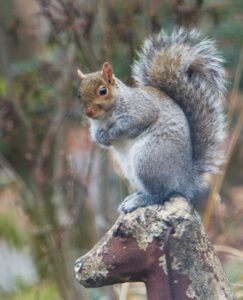
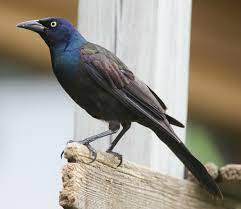
I had never had much interest in birds in past years. Yes, they can be beautiful, yes, they can be harbingers of seasonal change, and yes, they can keep down bugs in your garden.
But birds as interesting subjects, not so much! The nice thing about having friends with other interests is that their enthusiasms tend to rub off on you.
In more recent years I put out a bird feeder out in my backyard and have enjoyed the many visitors that have dropped by for a snack. The only fly in the ointment has been the squirrels.
I used to think that they were cute with their bushy tails, jumping gracefully from tree to tree, chasing each other and industriously checking out my garden looking for something to eat. Indeed, years ago I even trained an inquisitive squirrel to take nuts from my hand.

Gardeners Do Not Appreciate Squirrels

In the meanwhile though, I became a serious gardener and the local squirrels (Grey Squirrel – Sciurus carolinensis) became a force to reckon with. After having them dig up my bulbs immediately after planting, munching on my crocus and tulip blooms, and digging up my lawn to hide their winter nuts, it was hard to enjoy their charms in the same way.
Plantings can be protected by scattering moth balls but how can you prevent these pesky marauders from plundering the bird seed?
Neither Do Birders
This is a burning question for people with bird feeders. In fact, there are many examples of special bird feeders that can thwart squirrels and an entire literature exists devoted to effectively keeping them away from those seeds. Mark Rober, a former NASA engineer, has several videos proving the practical intelligence of these critters clearly demonstrating how they can cleverly think through strategies in order to chomp on those seeds.
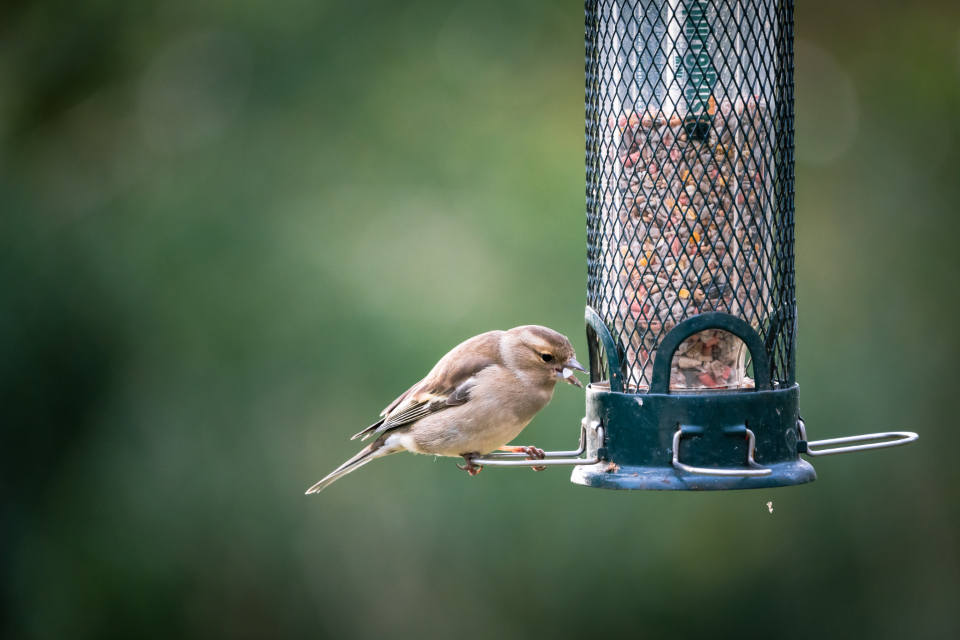
The Challenge
I decided that I was going to figure out a practical, inexpensive design to protect my birds and their seeds.
After all, how hard could it be!
The first thing I discovered was that squirrels can jump. And I don’t mean from branch to branch. They can leap from the ground onto a higher surface. So, we needed to know their height range. Thirty-five inches was too easy for them. After several height tests, we established that 47” was beyond their range.
So far, so good.
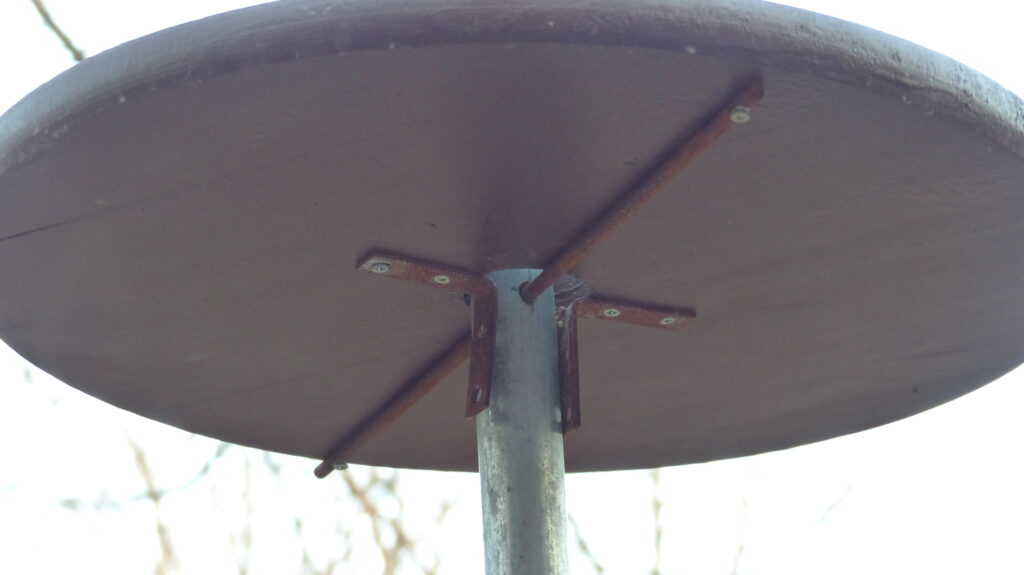
Then we created a simple construction consisting of a pole with a round of wood having a center hole like a donut over the pole at 47”. At that point we found out that if the diameter of the round was too small, the squirrels could climb the pole, and flip themselves onto the wooden platform. Since we had already invested in a round, I next tried to make the pole unclimbable.
My first effort involved greasing the pole with Crisco. I sat back and watched. The first time the squirrel faced that problem, it slid down the pole. For an animal that has no facial expression, I think I saw shock on its face. However, that was the last time that maneuver worked. From that point on, grease or no grease, the squirrel easily scurried up and onto the platform.
The next effort involved wrapping a strip with projections around the pole.
Squirrel 2, Sura 0
The final effort involved hanging a curtain around the perimeter of the platform but that didn’t faze our squirrel friend at all.
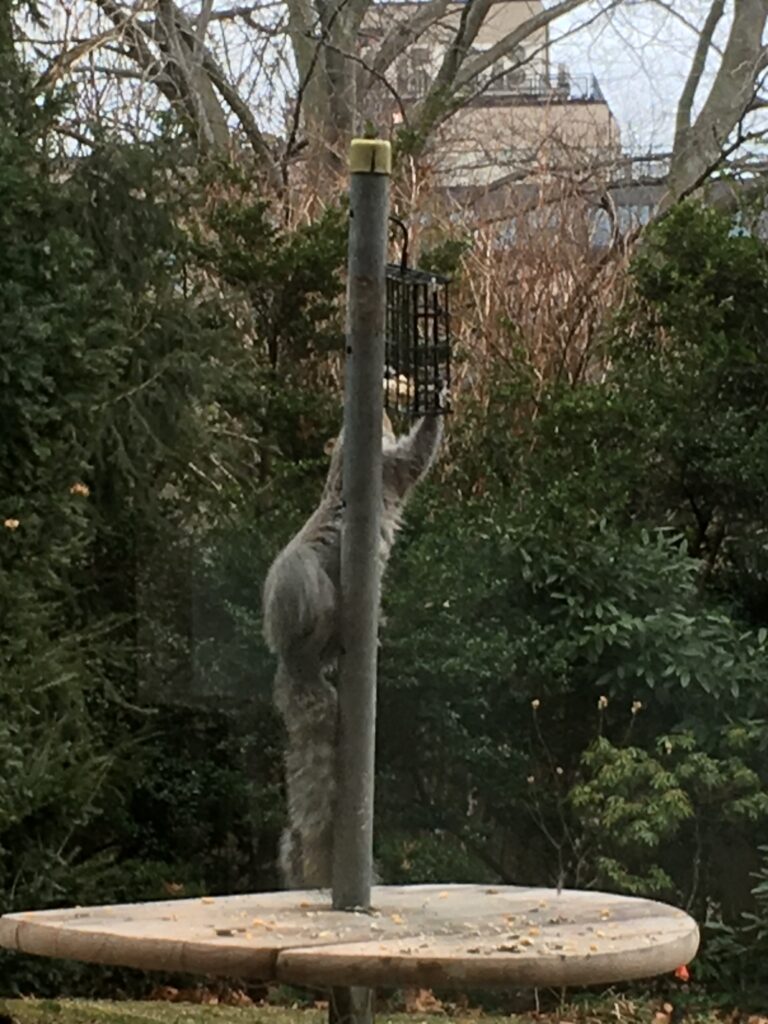
Finally, Finally
It was time to do what I should have done in the first place, which was to replace the original wooden platform with a wider one. The first trial involved a 36” diameter plexiglass round. It worked like a charm but it was so top heavy that the whole pole system blew over in the first strong wind.

Some time later I was wandering through a Holly Lobby store on Route 4 in New Jersey and spied a 31” round of thin metal. On one side it was stamped with the old Texaco logo and was clearly intended as a decorative piece. I brought it home and my husband drilled a larger hole in the center and multiple small holes throughout the surface so that it wouldn’t become a sail in the next strong wind.
The squirrel keeps trying to find a way to access the platform.
Sura 1, Squirrel 0
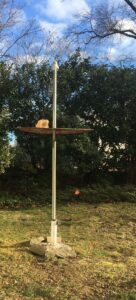
For additional interesting natural science reading, consider my book A Habit of Seeing: Journeys in Natural Science.
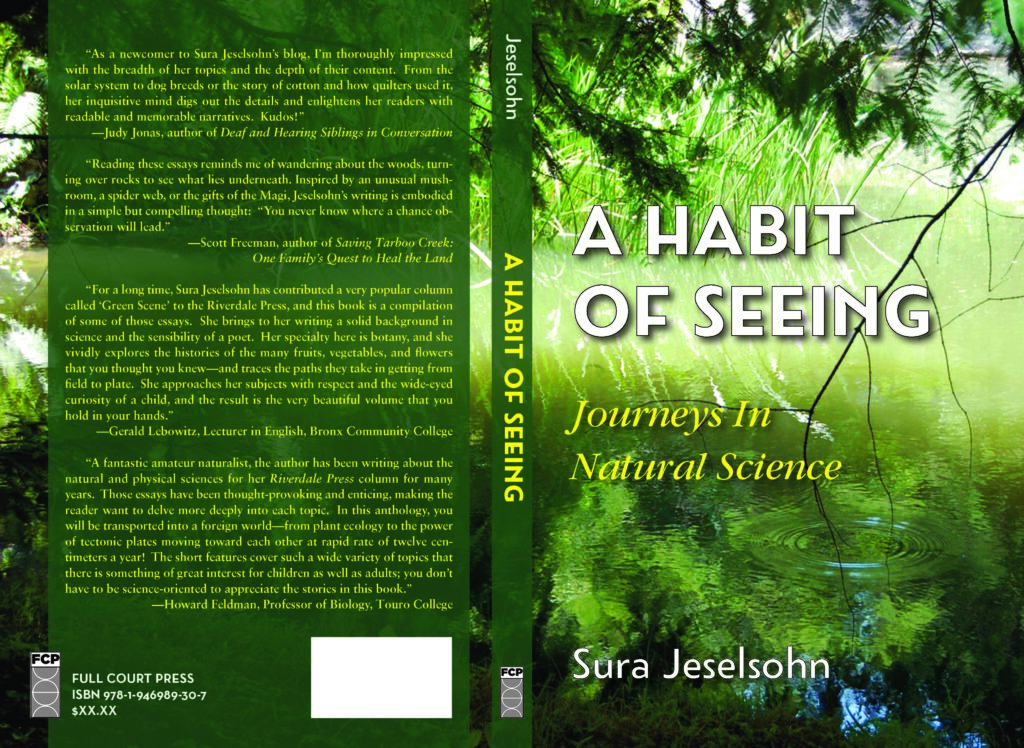
I have found that putting cayenne pepper power mixed in with the bird seed kept them from eating the bird seed. I also put out 2 separate suet cakes feeders that you can purchase suet made with hot pepper mixed in. Since I started using, I have had no squirrels trying to eat them. Those that try it once don’t try it again.
I think I tried that once or twice and didn’t find it effective. Glad it works for you.
Fun adventure, great learning process! Thanks for sharing. I still find myself staring at squirrels when in the US, they really are interesting and quirky, if you don’t mind the garden-pest angle.
I really enjoyed this! You may be the one to construct the definitive “better mouse-trap”! 🙂
So clever! Thank you for the story.
Best,
Rick